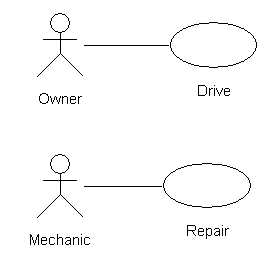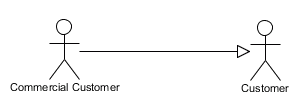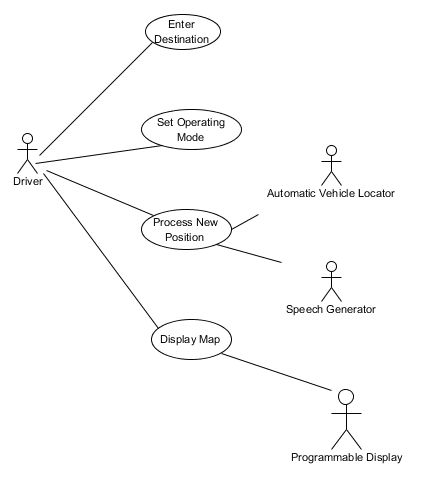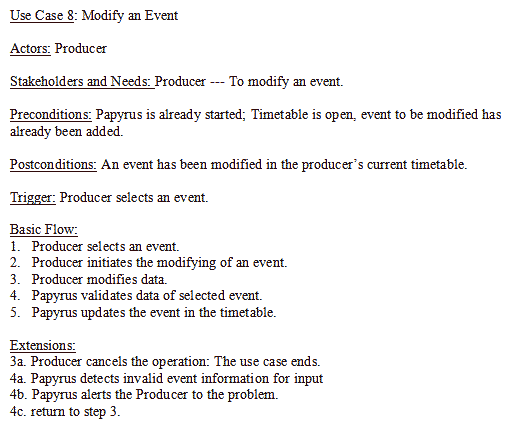|
Use Case Modeling
An Introduction |
|
Prof. David Bernstein |
| Computer Science Department |
| bernstdh@jmu.edu |
|
Use Case Modeling
An Introduction |
|
Prof. David Bernstein |
| Computer Science Department |
| bernstdh@jmu.edu |
and then..."







Drivers need IVANA to help get them where they want to go.
IVANA should work with the vehicle's location system (e.g., GPS), programmable display, and speech generation system.
IVANA should display a map and vehicle's location on the programmable display.
The user needs to be able to enter a destination.
IVANA should determine a recommended route, display it on the programmable display, and provide spoken turn-by-turn directions.
Use Case Diagram

From an In-Vehicle Navigation System named IVANA
| Actor Action | System Response |
|
0. This use case begins when the Driver chooses to enter a Destination. |
|
|
1. The system asks the Driver to select a Destination Type (either an Address or a Location). |
|
|
2. The Driver selects a Destination Type. |
|
|
3. The system asks the Driver to enter a Destination. |
|
|
4. The Driver enters a Destination. |
|
|
5. If the Destination is a Location the system records it.
|
From a Timetable System named Papyrus
